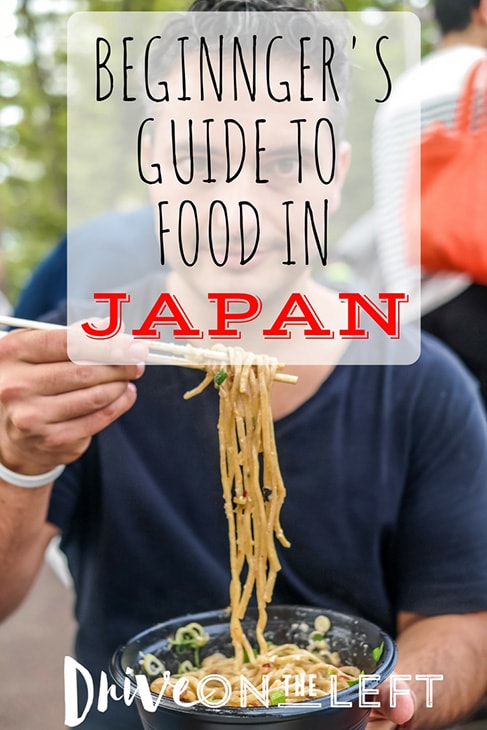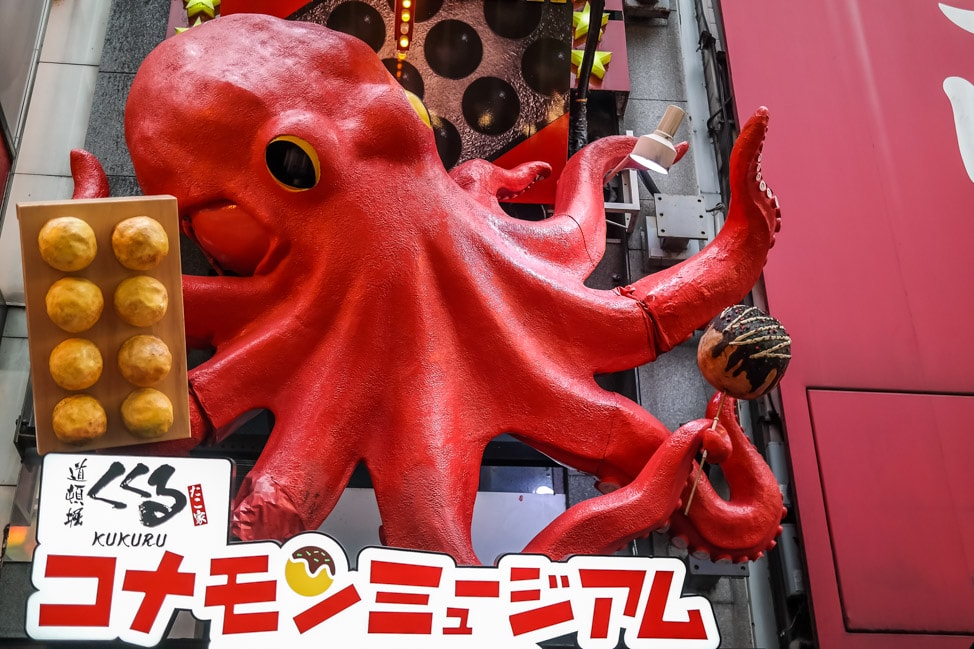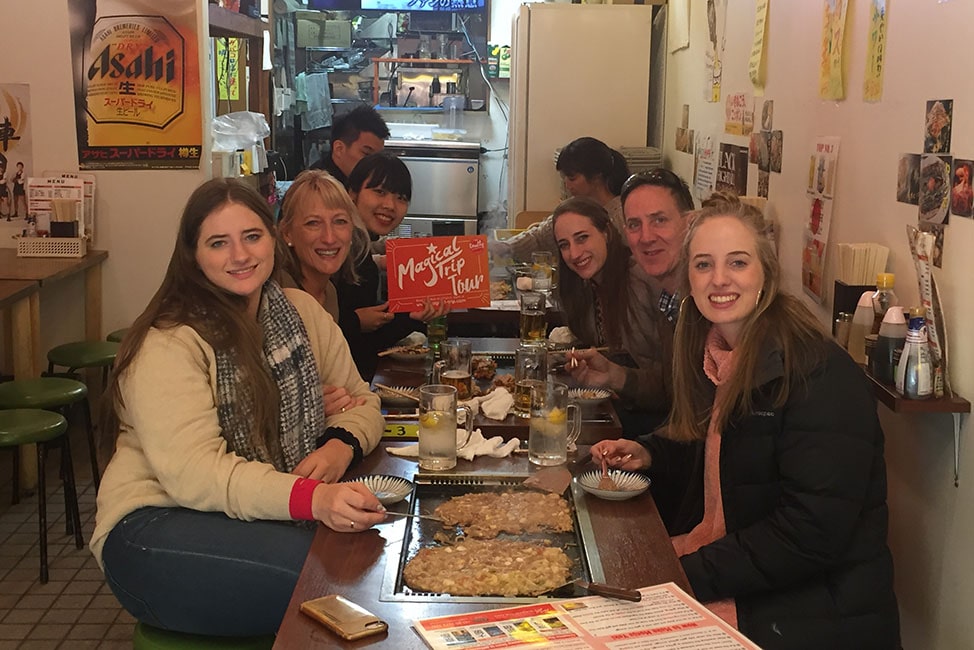You can visit Japan for its history, its culture, its nature, or its hyper-modern cities. But if you don’t dive into Japanese food headfirst, you are missing a huge chunk of Japanese life.
The Japanese food scene is one of the most vibrant in the world. Japan has the best and biggest fish market in the world in Tokyo (check out our guide for how best to visit the famous Tsukiiji Market). The Japanese people have a love for top quality ingredients and are masters of technique, from precise grilling and frying to cooking rice. It is hard to not eat well in Japan.
But where to begin?
If you are new to Japanese food, or your knowledge is limited to your local sushi restaurant’s California Roll or a ramen joint run by hipsters, then there is a lot to learn. This article is a primer – the foods Japan is best known for, and worth eating on your first visit. So grab the nearest set of chopsticks (you’ll need those!) and let’s eat!
For those who visiting Japan for the first time and expecting the authentic local experiences, we also recommend you to join Magical Trip tours. We found during the tours by Magical Trip you will be able to visit the places that you would never have been able to find by yourself with local guides, enjoying the real authentic local dishes there!
What to Eat in Japan: The Beginners Guide
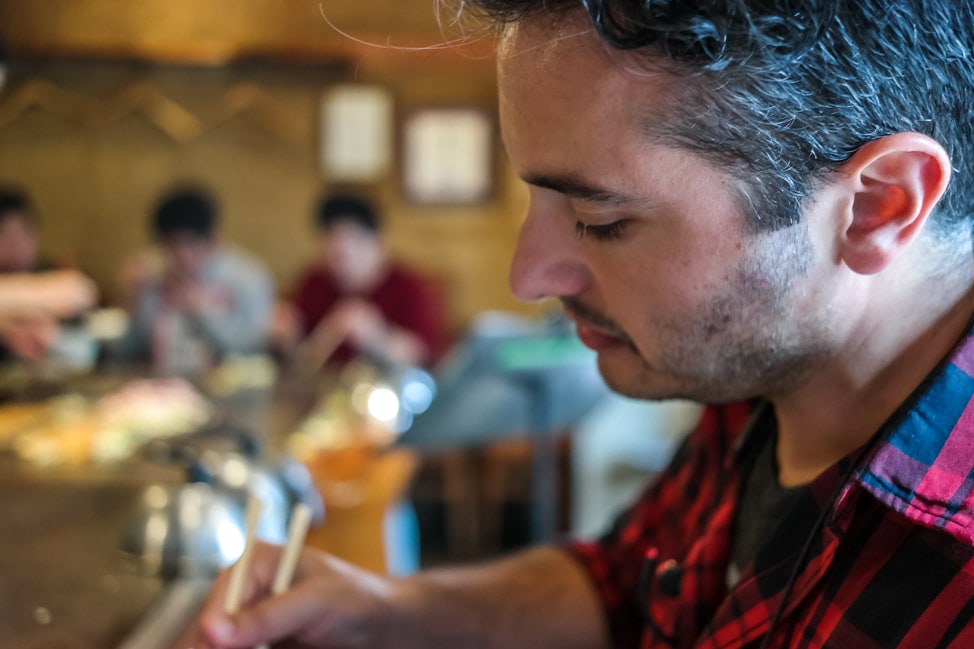
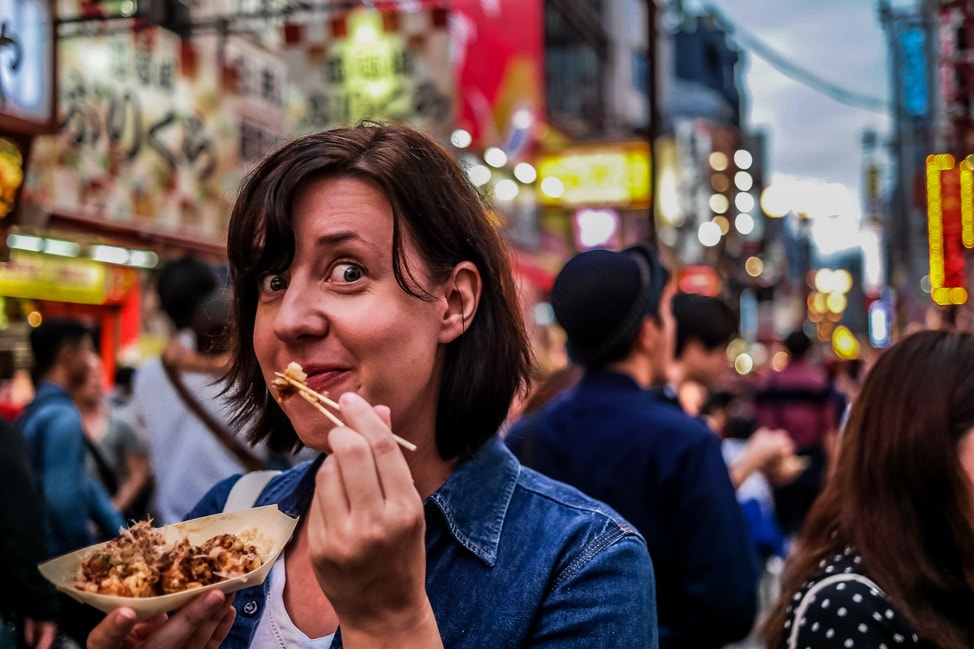
Sushi
To answer our biggest question about eating sushi in Japan, yes it’s better there.
The biggest difference we found between the sushi in Japan and in other countries is that the quality of the sushi is remarkably high. The rice is always perfectly cooked and incredibly well seasoned. No gummy sushi rice here. And if you never thought about the quality of the rice in your sushi experience, in Japan you will notice, because sushi is all about the rice.
When you do sit down for sushi in Japan for the first time, remember a few basic things: don’t mix the wasabi into your soy sauce, dip the fish (not the rice) into the soy sauce, and the pickled ginger is not for piling on top of your sushi, but for eating after a piece of sushi. Not a big deal, but it is always nice to try to adhere to the local way of doing things.
There are a few different tiers of sushi restaurants found in Japan:
- High-End Sushi: These restaurants typically have limited seating, serve one piece of sushi or nigiri at a time, probably have at least one Michelin star, and will charge for their quality accordingly. A dinner at the best will cost upwards of $300/person, like at Sukiyabashi Jiro from the documentary “Jiro Dreams of Sushi,” (which you should probably watch before going to Japan because it’s bonkers and amazing). Obviously, at that price, you expect the sushi to be perfect.
- Mid-Tier: The next level down might not have Michelin stars, but they still take sushi seriously. Some places might serve sushi one piece at a time at the sushi counter, or serve a handful of pieces at once. Frankly, for the average diner, the taste difference between a $300/person and a $100/person meal is barely even noticeable.
- Conveyer Belt: I am a total sucker for this. At these restaurants, you sit at a counter and just grab whatever tickles your fancy as it slowly moves past you on a conveyer belt. It seems a bit campy, but they are wildly popular. Each small plate has 2-3 pieces of sushi and each plate is color-coded, which determines the price. You keep all of the plates and when you are finished, the servers tally your bill based on the number and color of plates. This has the possibility of being terrible, but in Japan, they are amazing (like Sushi Midori near Meguro Station). The plates disappear fast, so no need to be worried about dishes sitting out for long. Plus, you can always put in an order for the exact sushi or hot dishes you want, if you don’t feel like waiting. Two people can eat well for around $30-40.
- Stand Up Sushi: This is the cheapest option for eating out because these places pack people in and offer set menus and a la carte options. As the name implies, there are no seats, so you just stand at a counter and eat. This minimizes the time people spend, so they can offer lower priced sushi thanks to the high turnover. Set meals can cost as little as $8.50.
- Supermarket Sushi: Most major supermarkets will have a wide array of prepared sushi. It is super affordable and very fresh. This is a great bet for a quick snack on the go, or if you want to grab something to eat back at your hotel.
Pro Tip: If you want to splurge on sushi, go at lunch. Even at Michelin-starred restaurants, the lunch deals are incredible. You can get set lunch deals for as little as $40 at sushi restaurants that charge $150-200 for dinner.
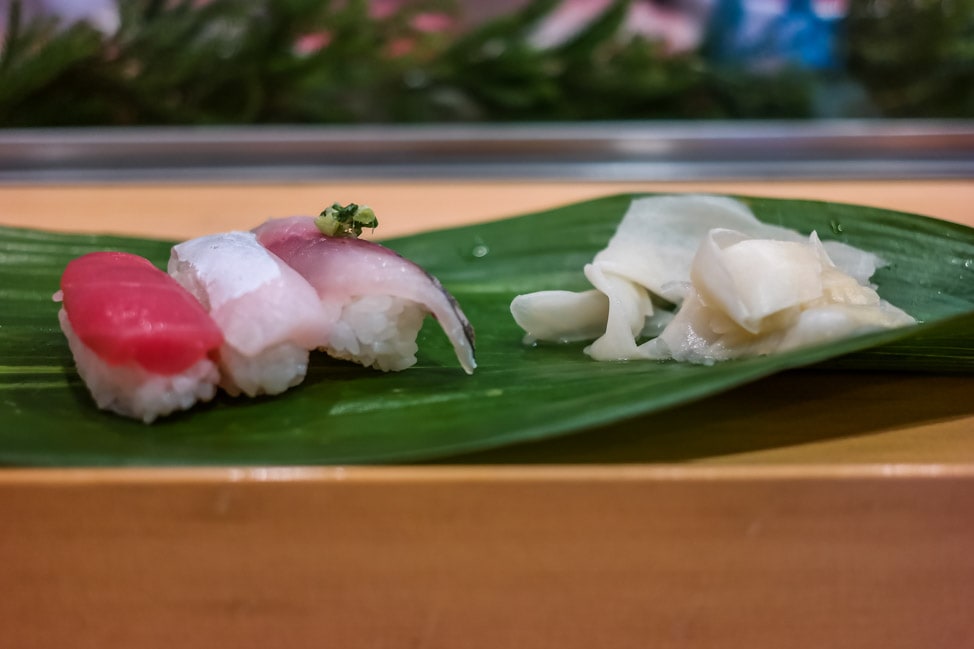
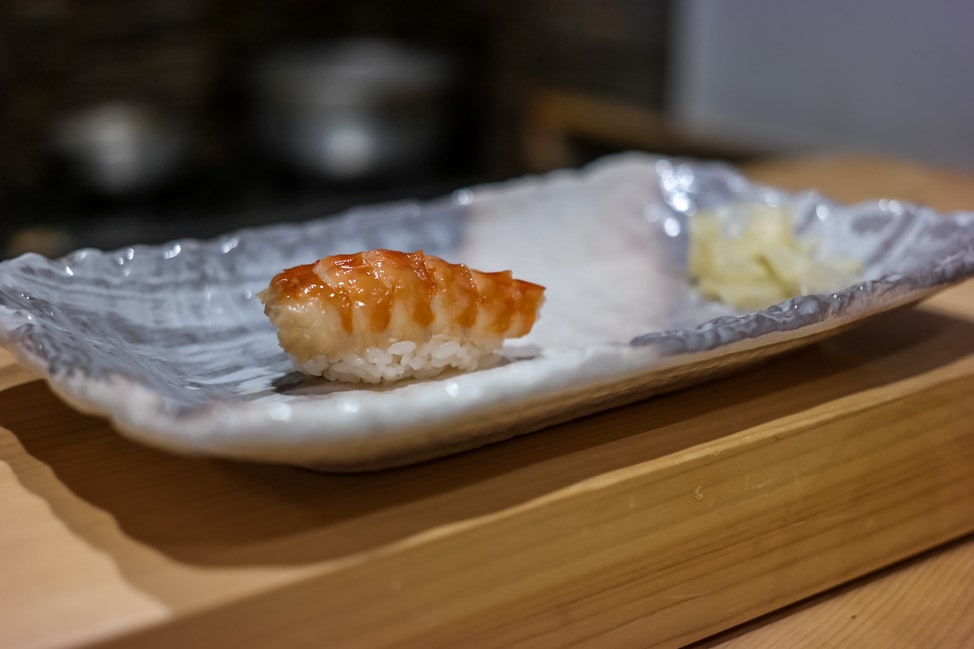
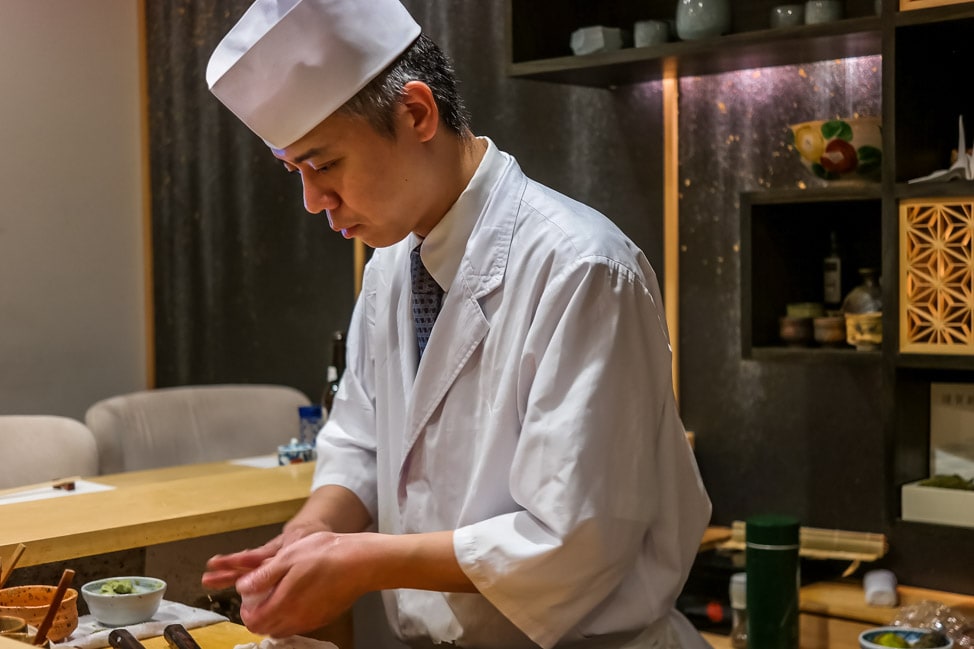
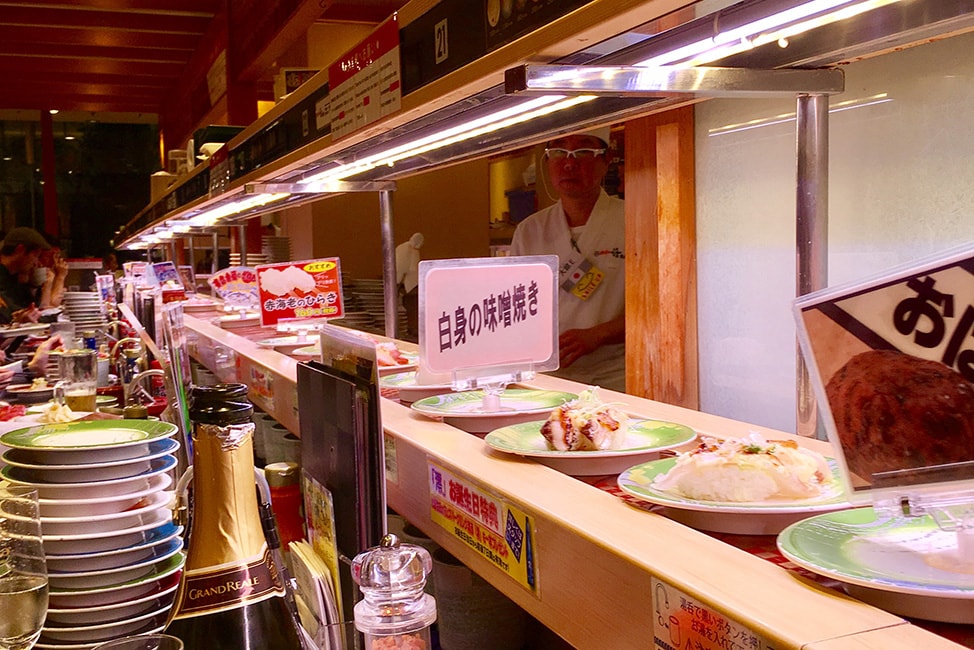
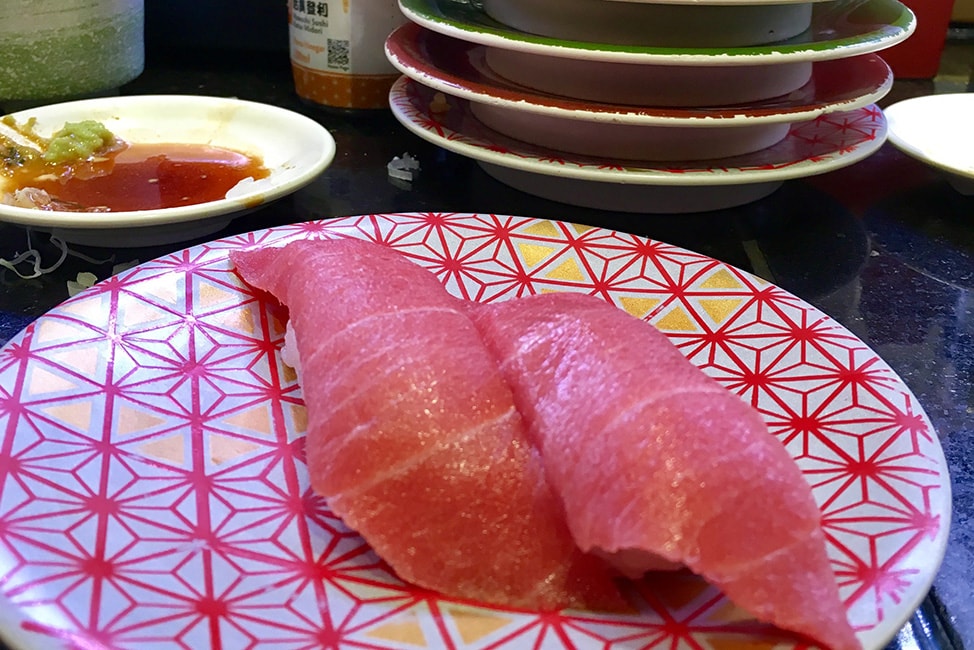
Yakitori
Grilled meats, done right. Perfect for families and hangovers alike.
The premise of yakitori (which means “grilled chicken”) is simple: grilled meat, fish, or vegetables on a skewer. Rocket science it is not.
But from chicken thighs to mushrooms, everything is well seasoned and usually glazed by paintbrush with a soy sauce-based sauce. There are many yakitori restaurants around the capital, and our meal at Yakitori Nanbantei in Roppongi was one of the food highlights of our time in Japan. You can sample yakitori at dedicated restaurants like we did, or you can have it at an izakaya (the Japanese version of a bar that serves food) or snack on skewers on the street. The cost will vary from a few dollars per skewer on the street to a whole meal of skewers with drinks for around $75-100 for two people.
Pro Tip: If your yakitori comes with a side of lemon wedges, squeeze the tiniest bit of juice on the skewer before chowing down. It brings the flavors to a whole new level.
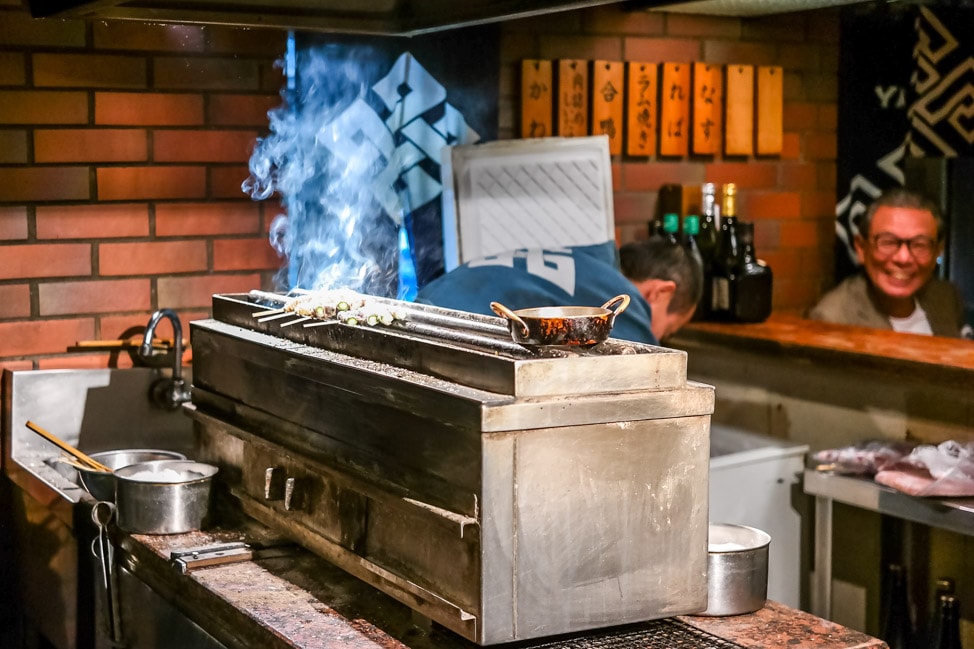
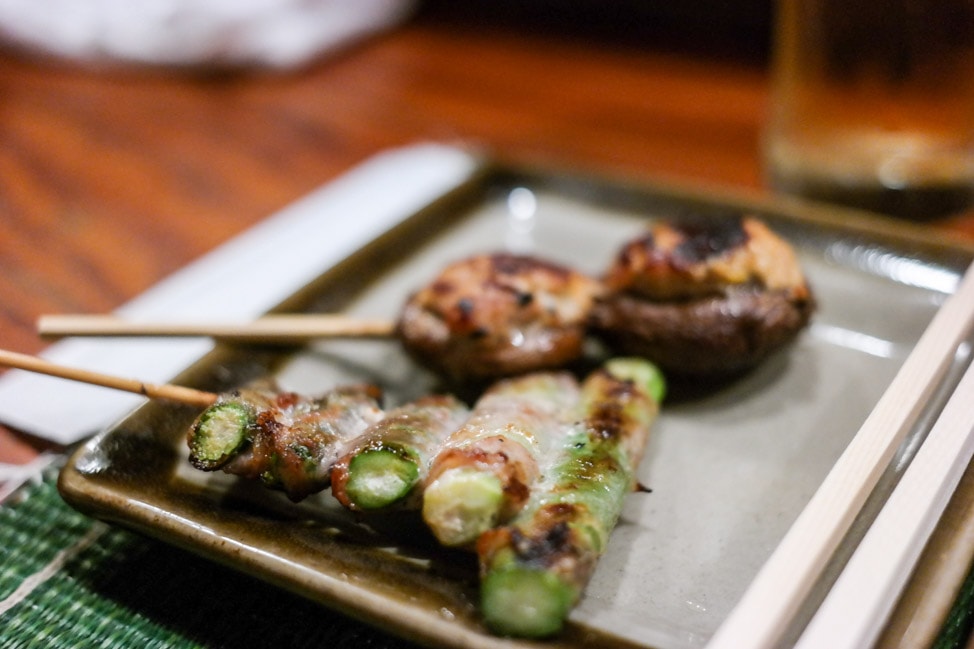
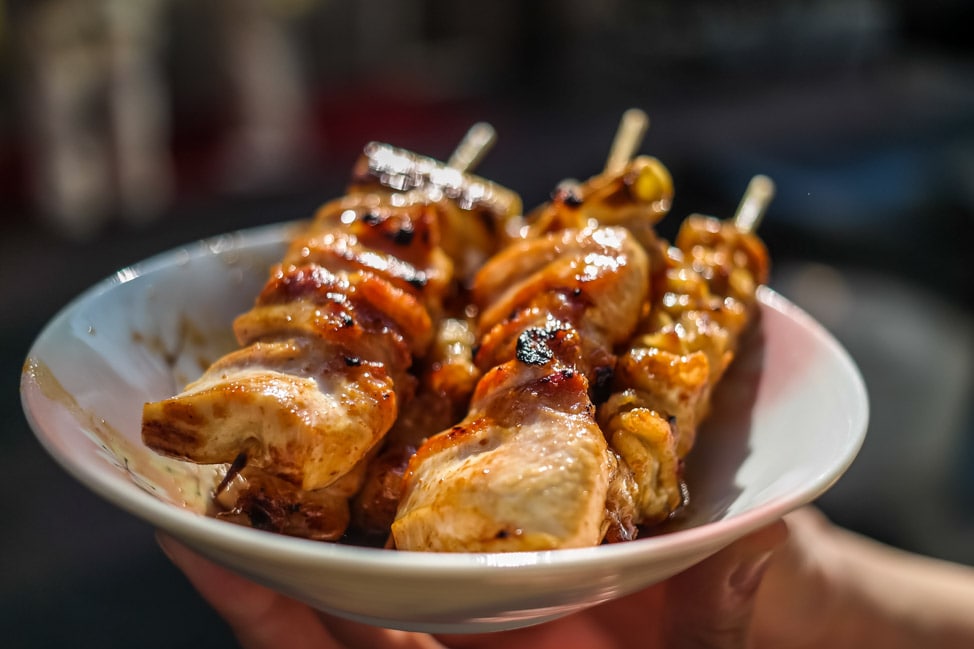
Ramen
Ramen has exploded in popularity over the past decade. Like most Japanese food, ramen is deceptively simple, just noodles in a broth with a few toppings: thinly-sliced braised pork belly, some vegetables, and a few garnishes. Each region of the country has their own style of broth, from heavy, almost creamy pork bone broth, to lighter, more delicate soy or miso based broths. To sample ten of the most popular styles, head up to the 10th floor of the Kyoto Train Station to ‘Ramen Street,’ a whole floor dedicated to the different varieties of ramen.
The great thing is that ramen is affordable and quick. Most restaurants utilize a vending machine ordering system. You hit the button of what bowl of ramen you want, feed your money into the machine, and then hand the receipt to someone in the restaurant. By the time you sit down, you bowl is already being constructed and served piping hot within minutes. All for less than $10 per bowl.
Basically, order your dinner from the world’s best vending machine and you’ll be happy you did.
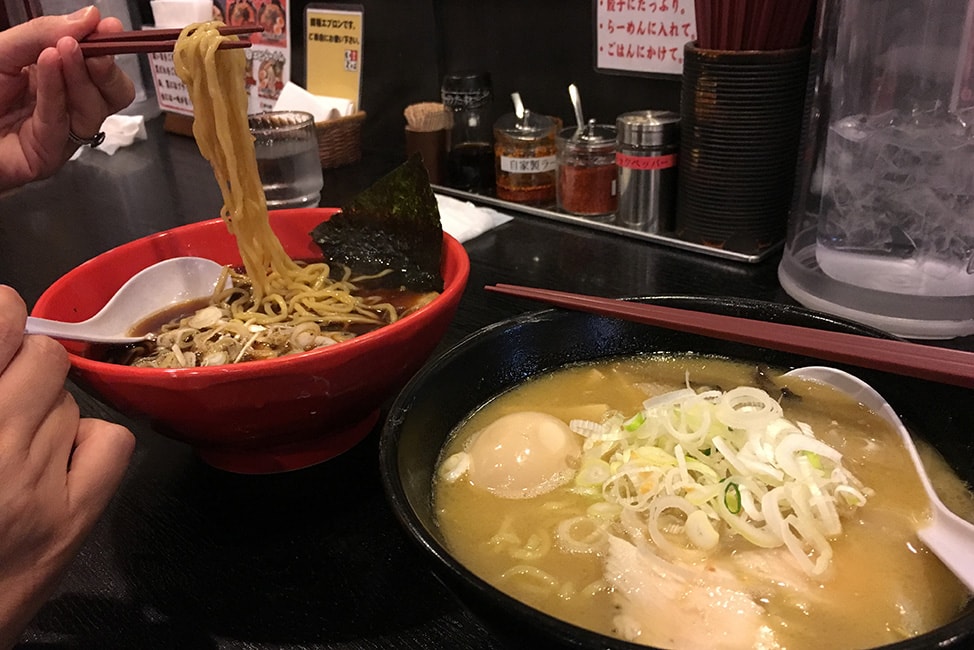
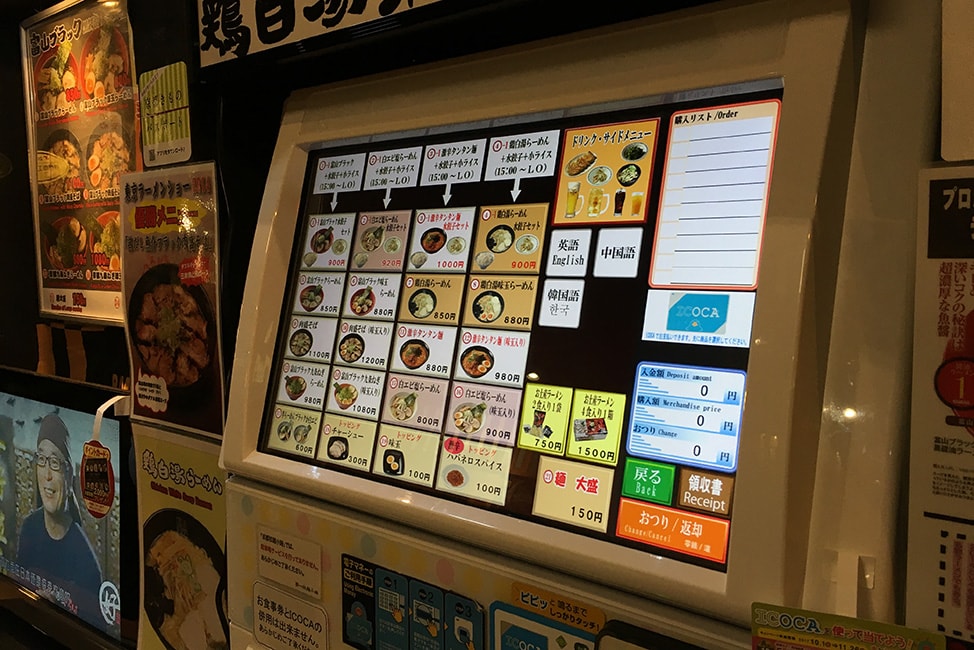
Udon
Udon is another popular Japanese noodle, but these are thick and almost chewy. Udon can be prepared either hot or cold. Cold udon noodles are cooked then chilled, and served on a tray, alongside a bowl of soy sauce-based dipping sauce and vegetable accompaniments. You simply add some vegetables (and some togarashi seasoning for heat if you so desire) to the sauce, then pick up the cold udon, dunk them in the bowl of sauce, and slurp away. For a perfect example, try Omen in Kyoto. You won’t be disappointed and loud slurping is totally encouraged.
You can also have hot bowls of udon noodles in broth, much like ramen. Many utilize the same vending machine system and are incredibly affordable. Some more casual udon places, like Oniyamma near Gotanda Station in Tokyo, don’t even have seats. You can just stand at the counter and eat your perfect bowl of udon.
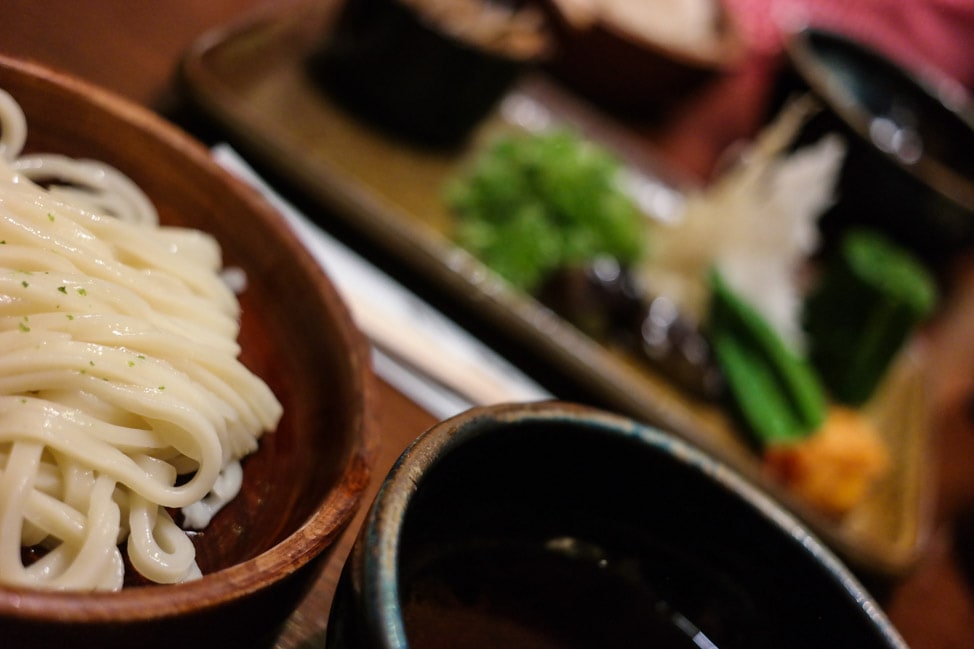
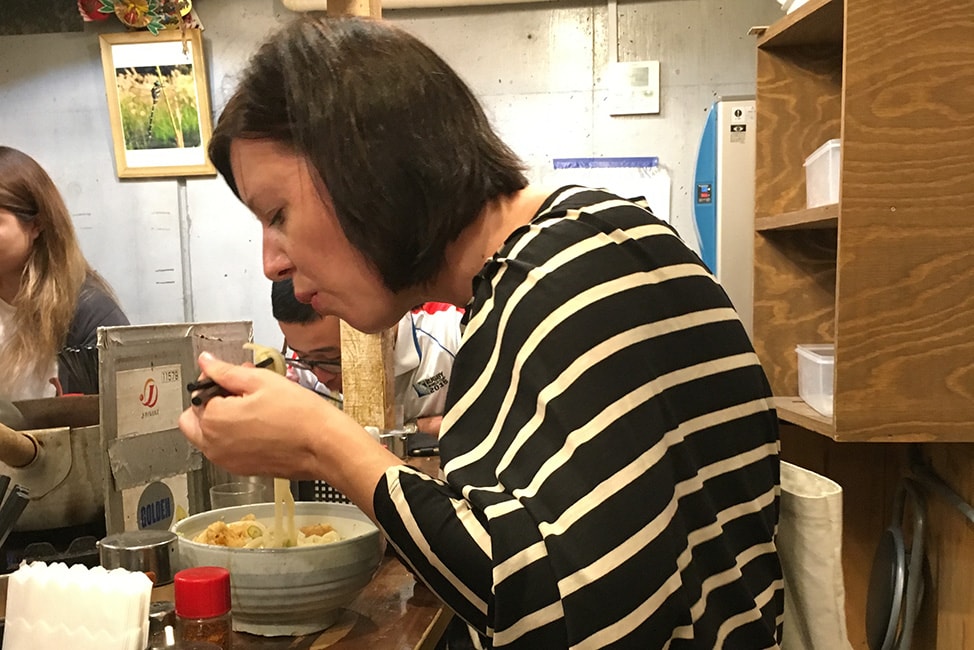
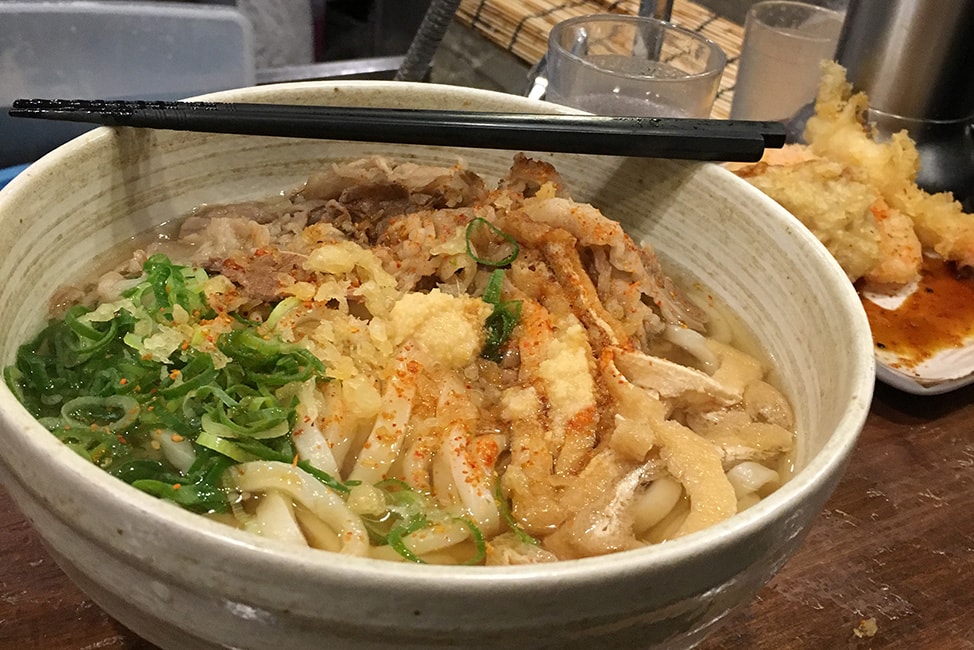
Soba
Rounding out the trifecta of Japanese noodles is the humble soba noodle. This noodle, thin and made with primarily buckwheat flour, can also be served warm in a broth, or cold for dipping. The different flour mixture gives soba noodles more heartiness.
Truth be told, Julie is not a big fan of soba noodles. I, however, love them. If you find yourself in Kyoto, you can visit Honke Owariya, a family restaurant that is currently run by the 16th generation, having started business in 1465. They haven’t been serving soba for 16 generations, but they have been perfecting their technique for around 100 years.
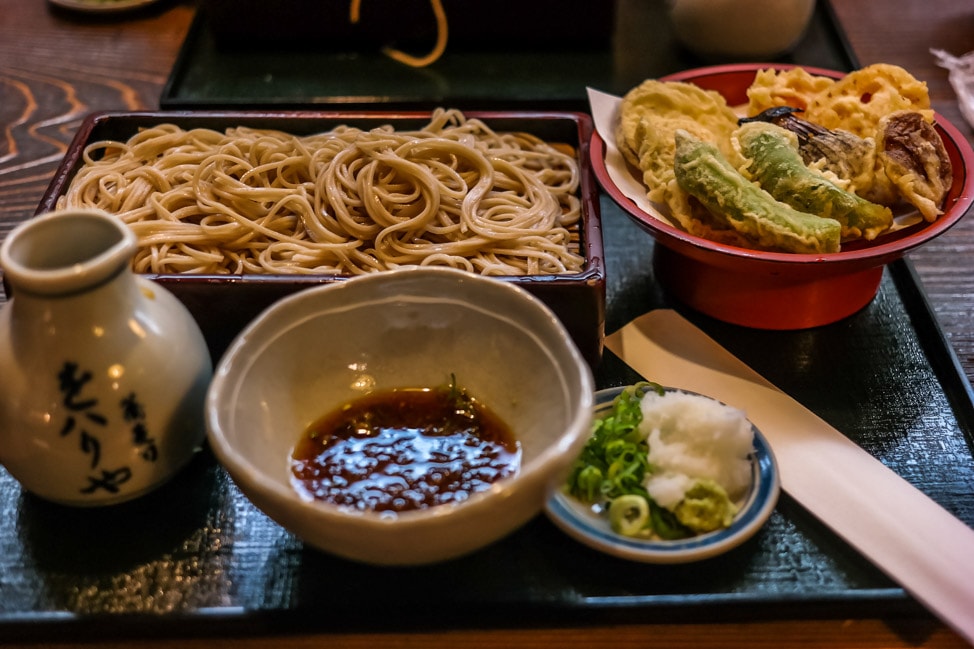
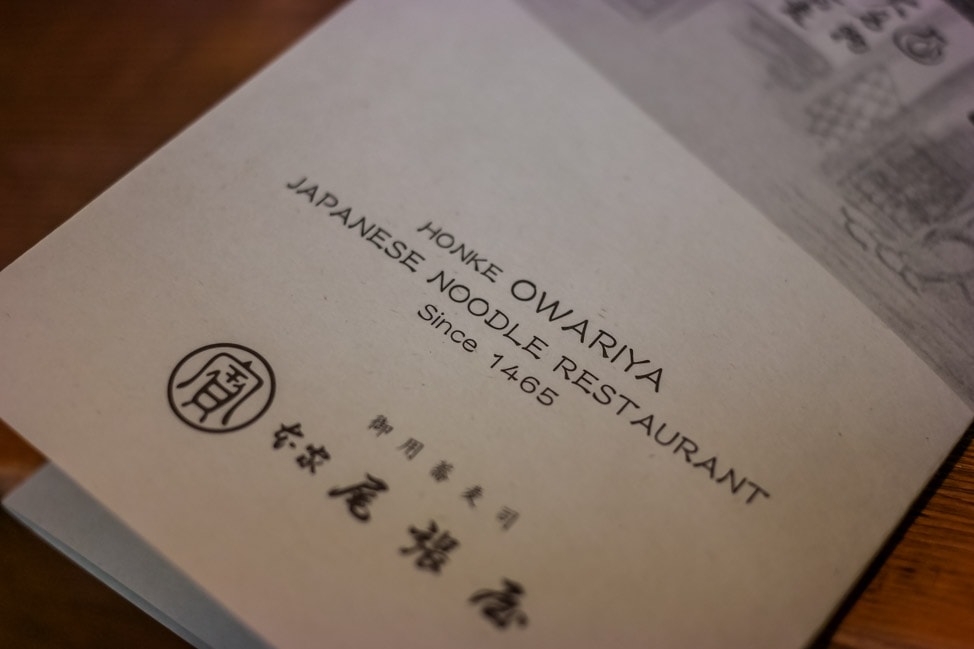
Okonomiyaki
Because Japanese food is so savory, it is one of my all-time favorite drunk cuisines. There are just so many options of fatty, salty and fried foods to choose from.
Okonomiyaki is an ideal example, and a staple of many izakayas around Japan. Ok, it’s not exactly pretty (another key factor in good drunk food) but this pancake of sorts, includes a heaping pile of cabbage, held together by a very, very thin batter, similar to a crepe batter. Other additions include pork, shrimp, squid or even bacon. The whole thing is cooked on a flat top and is flipped a few times until the batter is cooked, the cabbage has softened, and the top and bottom are nicely browned. It is then covered in a sweetened soy sauce, drizzled with mayonnaise, and showered with bonito flakes (dried and smoked flakes of tuna).
Heart-healthy this is not. But boy, oh boy, does it taste good.
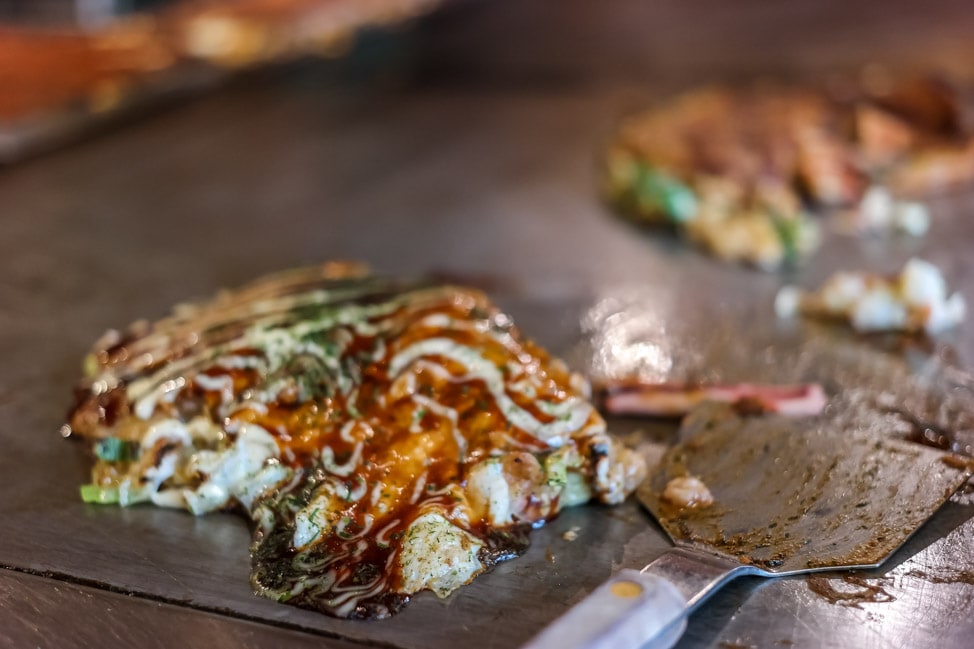
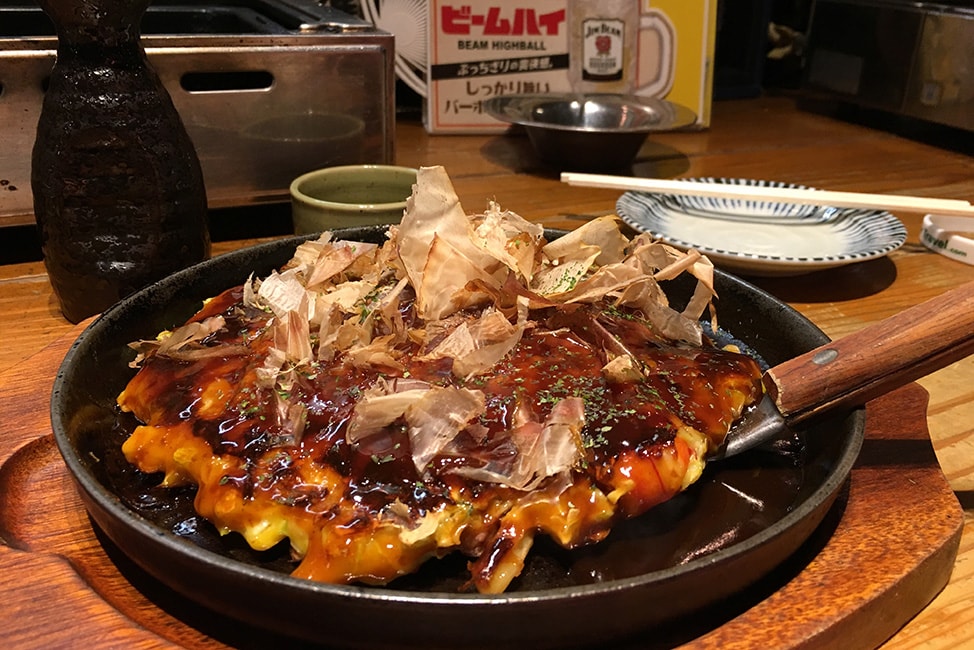
Takoyaki
This a street food you see in many Japanese cities, but is especially popular in the food mecca of Osaka. Takoyaki (or octopus balls as I like to call them), are golf ball sized balls. They are made with a flour-based batter, studded with pieces of octopus, pickled ginger, and green onion, and they’re cooked in specially molded cast iron pans. When piping hot, they are drizzled with sweetened soy and topped with bonito flakes.
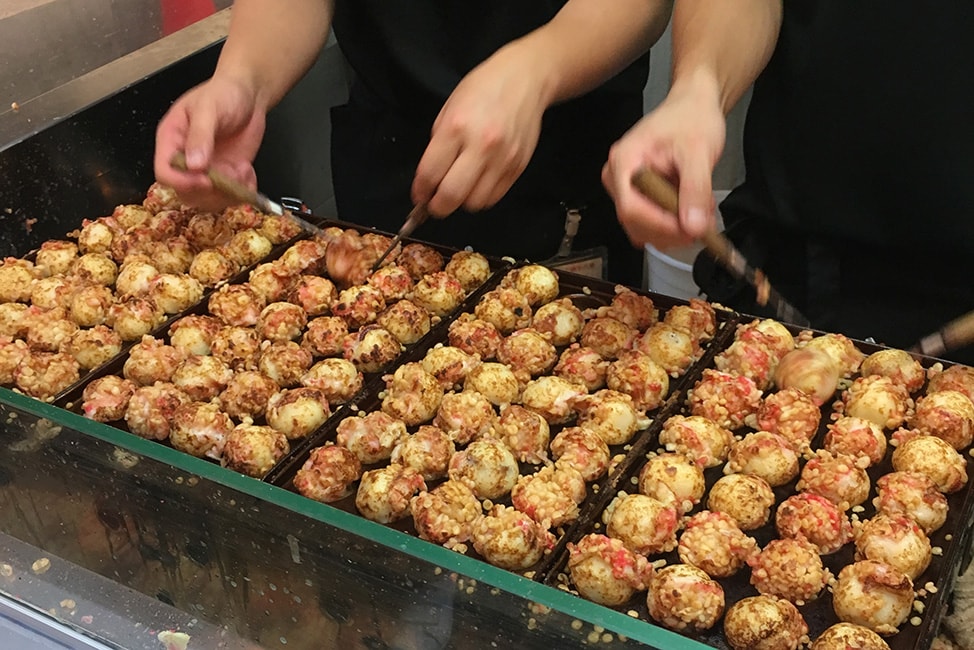
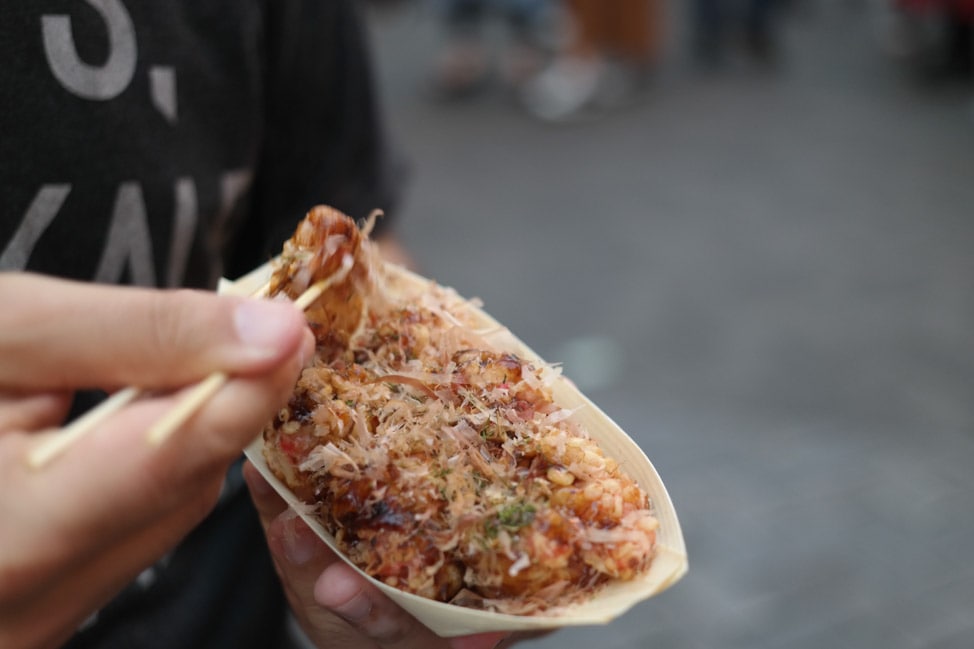
Kaiseki
A style of eating that grew out of the Imperial Court of Kyoto, Kaiseki is a very traditional, multi-dish Japanese meal. It is normally served on a single tray, with many tiny bowls of food. It is the style of meal served at the traditional ryokan hotels around Kyoto.
A typical Kaiseki meal starts with a brothy soup, and is followed by a grilled piece of fish (and sometimes a few slices of sashimi), and a wide variety of vegetables, raw, cooked, or pickled, and very lightly seasoned. There is typically a small bowl of rice for eating along with the fish and veggie toppings.
This traditional Japanese experience comes at a price, where the finest ryokans charge upwards of $350/person for Kaiseki. You can find deals at lunch at restaurants not connected to ryokans for around $40-50/person.
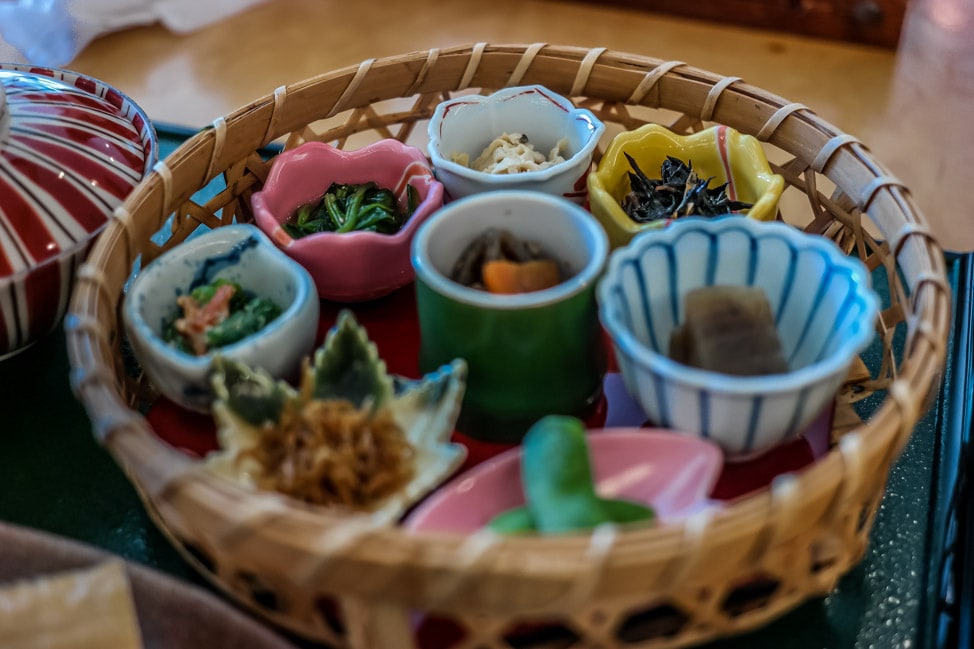
Tempura
The Japanese are masters of technique, and tempura is no exception.
Tempura is made with a thin batter consisting of wheat and rice flour, cold water, and egg. It results in a light, but incredibly crispy batter for anything you want to fry, from shrimp and fish to vegetables like onions, squash, or asparagus. You can find tempura stalls that sell by the piece (like on our food tour in Tokyo), it is served as a side dish at restaurants, or you can even have a full, Michelin-starred tasting menu of nothing but tempura, served one piece at a time.
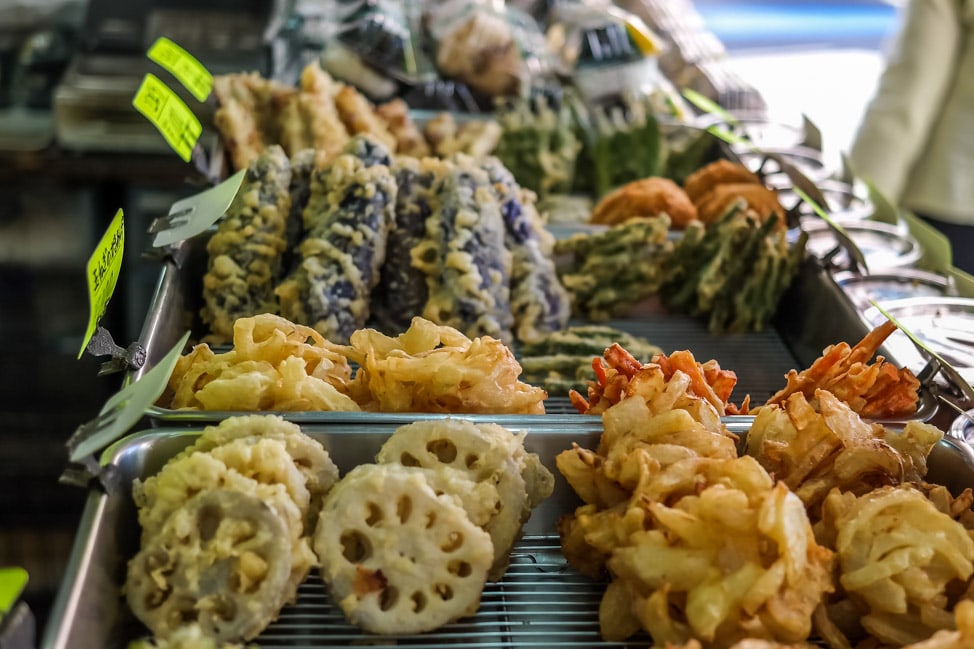
Kobe Beef
Japanese Wagyu beef, especially from Kobe, is simply the finest beef in the entire world. You may have heard of Kobe beef before, or seen it on menus before. But, unless you paid over $100 for your “Kobe burger,” you were not eating the real deal. The real, Japanese Wagyu from Kobe is hard to find outside of Japan, and the price is simply outrageous.
The real stuff is only from the Hyogo Prefecture (the area around Kobe) and from a special strain of Wagyu cattle called Tajima. It is renowned for its marbling and tenderness (not to mention the price). In the US, for instance, “Kobe” or “Kobe-style” can be used on labels for meat from Black Angus cattle that have been crossbred with Wagyu cattle.
It is sort of like saying cricket and baseball are the same because both sports use a bat.
In the city of Kobe, you can find many steakhouses specializing in real Kobe beef. It can be cooked over charcoal, in a pan, or on a flattop griddle. Here, the prices are high and the portions are tiny. Even a small, 6oz. steak will cost around $50, with higher-end cuts like sirloin and filet costing anywhere from $80 and up. With the incredible amount of marbling, the meat is super rich so the smaller portions are all you’ll need. Trust me.
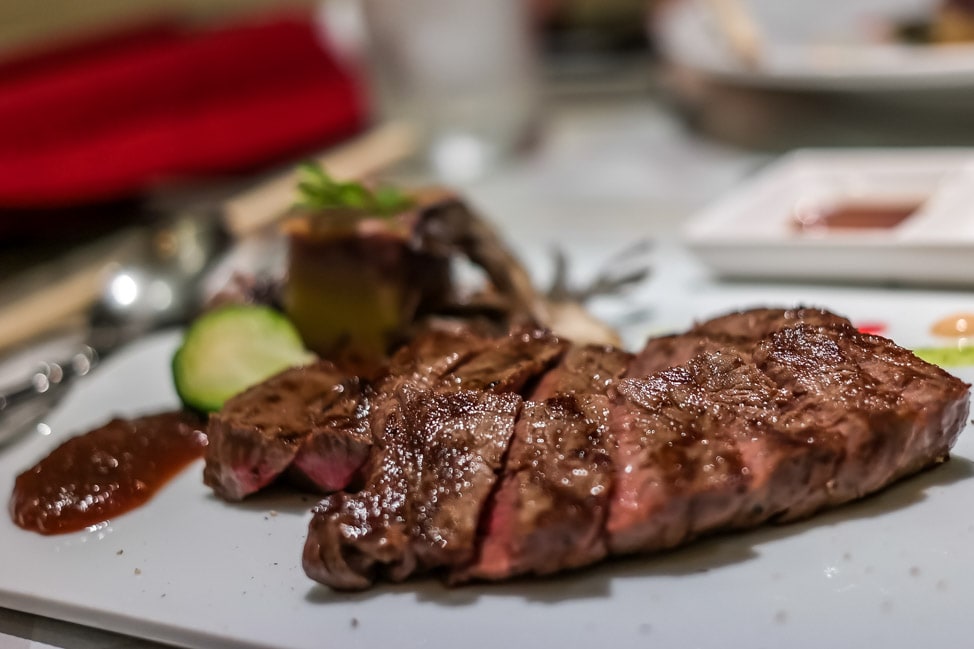
Matcha
Okay, okay. I know. Matcha is not a food.
It is finely ground green tea, but the Japanese are obsessed and a trip to Japan is not complete without a good dose of matcha. There are matcha tea stalls everywhere, but the matcha powder has found its way into dishes as well, including matcha ice cream, matcha swiss rolls, matcha candies, matcha cookies, and lots more. I’m a big fan of matcha, so I was in matcha paradise in Japan.
This insane looking concoction below is a combination of matcha ice cream, matcha jelly, matcha powder and matcha tea. Just keep an eye out for green desserts and you’ll find your way into matcha heaven soon enough.
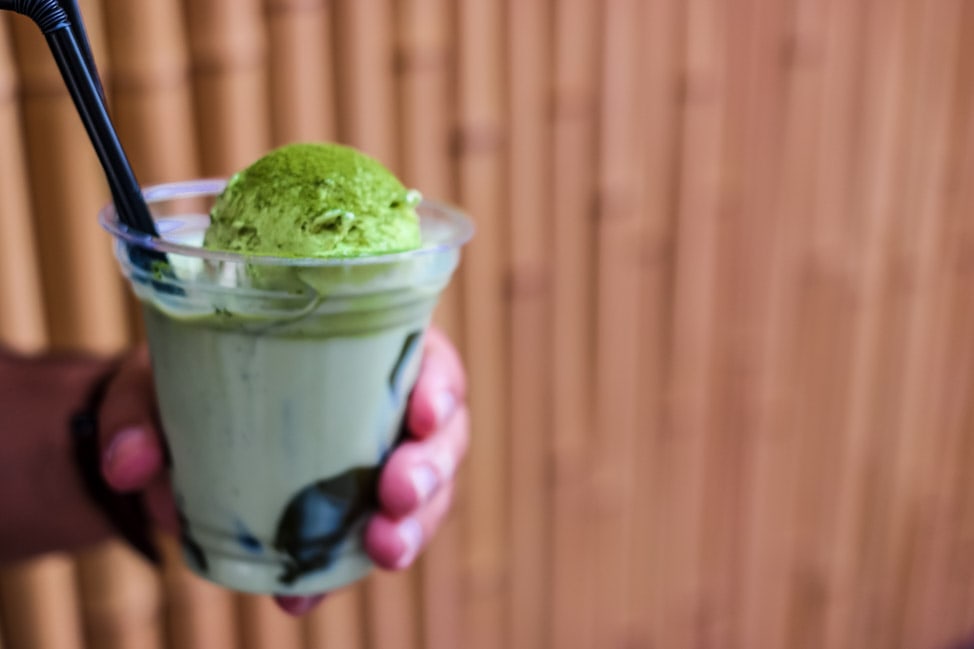
Whew! 2,500 words later, I feel like I’m just getting started down the rabbit hole that is Japanese food.
Japan is a country that takes its food very seriously, and no trip there is complete without a big dose of it. While it’s easy to eat conveyor belt sushi every day (and who can blame you? It’s delicious!), I hope that this primer has helped you realize that there is so much more to Japan than just fish. In fact, if you don’t like fish, you can visit Japan and eat well, too. The cuisine is just that diverse and delicious.
Plus, where else can you order your dinner from a vending machine and get one of the best bowls of food you’ll ever have?
